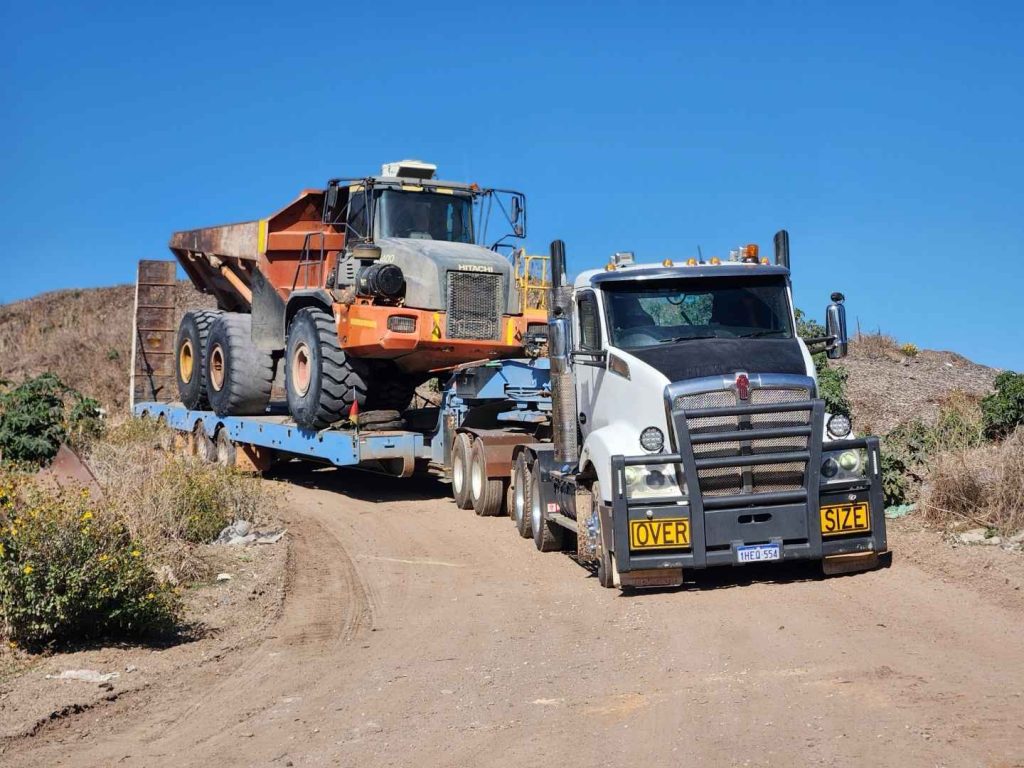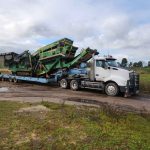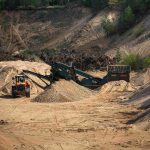Transporting large, heavy, and oversized loads requires specialized expertise, precision, and equipment. This process, widely known as heavy haulage, is a vital part of construction, mining, and infrastructure development. Without it, the movement of machinery, oversized loads, and critical resources would not be possible. At Peel Resource Recovery, heavy haulage services are designed to meet the complex needs of modern industries, ensuring safe, reliable, and environmentally conscious transport solutions.
With the growing demand for infrastructure development and resource recovery, heavy haulage has become increasingly important in supporting economic growth and environmental sustainability. More than just moving cargo, it represents the backbone of industries that rely on efficiency and safety in every operation.
What is Heavy Haulage?
Heavy haulage refers to the transportation of goods that exceed the size and weight limits of conventional freight. These loads can include industrial equipment, construction machinery, mining vehicles, bridge beams, turbines, and other oversized items. Because of their weight and dimensions, heavy haulage requires advanced logistical planning, specialized trailers, and skilled operators to ensure secure and compliant transport.
Heavy haulage is distinct from standard freight because it often involves:
- Oversized permits and regulatory approvals.
- Escort vehicles for road safety.
- Specially engineered trailers for stability and weight distribution.
- Route planning to avoid low bridges, narrow roads, or restricted areas.
At its core, heavy haulage is about precision and responsibility. Every detail, from planning to execution, must align with safety regulations and industry standards.
The Importance of Heavy Haulage in Modern Industries
Heavy haulage is essential because it supports industries that depend on the safe and timely delivery of oversized equipment. Its importance can be broken down into several key areas:
1. Supporting Infrastructure Development
Bridges, highways, and large-scale construction projects require the movement of steel beams, concrete structures, and massive machinery. Without heavy haulage, these projects would be delayed or impossible to complete.
2. Enabling Resource Recovery
Companies like Peel Resource Recovery rely on heavy haulage to transport machinery and recycled materials. This ensures that recovered resources are efficiently delivered to industries that need them, reducing reliance on raw materials.
3. Meeting Safety Standards
Heavy haulage ensures that oversized loads are transported safely, reducing the risk of accidents on public roads. Trained drivers, support vehicles, and compliance with road safety laws all contribute to minimizing hazards.
4. Contributing to the Economy
The mining, energy, and construction industries depend on heavy haulage to deliver essential equipment. By enabling the movement of such critical assets, heavy haulage directly supports national economic growth.
The Process of Heavy Haulage
Transporting oversized loads involves meticulous planning and execution. A typical heavy haulage operation includes:
-
Assessment and Planning
Before transport begins, a detailed assessment of the load’s size, weight, and destination is conducted. Permits and approvals are obtained, and the safest, most efficient route is planned. -
Load Preparation
Cargo is secured with specialized rigging, ensuring stability during transport. Engineers may also reinforce trailers to handle specific weights. -
Transport Execution
Professional drivers operate trucks and trailers designed for oversized loads. Escort vehicles often accompany the haul to manage traffic and road safety. -
Delivery and Offloading
Upon arrival, specialized equipment and cranes may be used to safely unload the cargo. The goal is a seamless handover without delays or safety issues.
Equipment Used in Heavy Haulage
Heavy haulage relies on advanced machinery to handle massive weights and unusual shapes. Key equipment includes:
- Low-loader Trailers: Designed to carry tall and heavy machinery, reducing overall transport height.
- Extendable Trailers: Allow for carrying long loads such as beams or wind turbine blades.
- Multi-axle Trailers: Distribute weight evenly to comply with road regulations.
- Prime Movers: Heavy-duty trucks with the power to tow oversized cargo across long distances.
Modern equipment is engineered for fuel efficiency, safety, and durability, reducing the environmental footprint of haulage operations.
Challenges in Heavy Haulage
Despite its importance, heavy haulage comes with significant challenges:
- Regulatory Compliance: Different regions have strict rules for oversized loads, requiring careful planning and multiple permits.
- Safety Risks: The potential for accidents is high if loads are not properly secured or routes are not adequately assessed.
- Environmental Concerns: Large vehicles consume more fuel and generate higher emissions, making sustainability a challenge.
- Infrastructure Limitations: Narrow roads, low bridges, and weight-restricted areas complicate route planning.
These challenges highlight the need for experienced companies like Peel Resource Recovery, which combine technical expertise with a strong commitment to safety and sustainability.
Heavy Haulage and Sustainability
Sustainability is increasingly becoming a priority in transport and logistics. Heavy haulage, while energy-intensive, is evolving to reduce its environmental impact.
- Efficient Routing: Advanced planning minimizes unnecessary travel, reducing fuel use.
- Fleet Modernization: Using fuel-efficient vehicles helps lower emissions.
- Integration with Recycling: By transporting recycled materials, heavy haulage directly supports the circular economy.
- Compliance with Standards: Regulations set by organizations such as the U.S. Department of Transportation ensure companies prioritize environmental and safety practices.
At Peel Resource Recovery, sustainability is embedded into heavy haulage operations, reflecting their mission to support industries while protecting the environment.
Future of Heavy Haulage
The heavy haulage industry is evolving rapidly, driven by technology, sustainability goals, and increasing demand. The future will see:
- Digital Technologies: Real-time tracking, route optimization, and AI-assisted logistics to enhance efficiency.
- Green Energy Adoption: Use of hybrid and electric heavy vehicles to cut emissions.
- Improved Safety Systems: Advanced monitoring and automation to reduce driver fatigue and accidents.
- Stronger Industry Integration: Heavy haulage will continue to be a core partner in recycling, construction, and mining sectors.
Peel Resource Recovery is positioned to embrace these trends, ensuring their services remain at the forefront of heavy haulage innovation.
Conclusion
Heavy haulage is more than just transporting oversized cargo; it is an essential service that keeps industries moving. From construction to resource recovery, it plays a central role in economic growth, sustainability, and community development.
At Peel Resource Recovery, heavy haulage services are delivered with expertise, precision, and a strong commitment to safety. By integrating sustainability and advanced technology, they ensure industries have reliable and environmentally responsible solutions for transporting oversized loads.
As the demand for infrastructure and recycling continues to grow, heavy haulage will remain a cornerstone of progress, supporting industries today and shaping a sustainable future for tomorrow.






